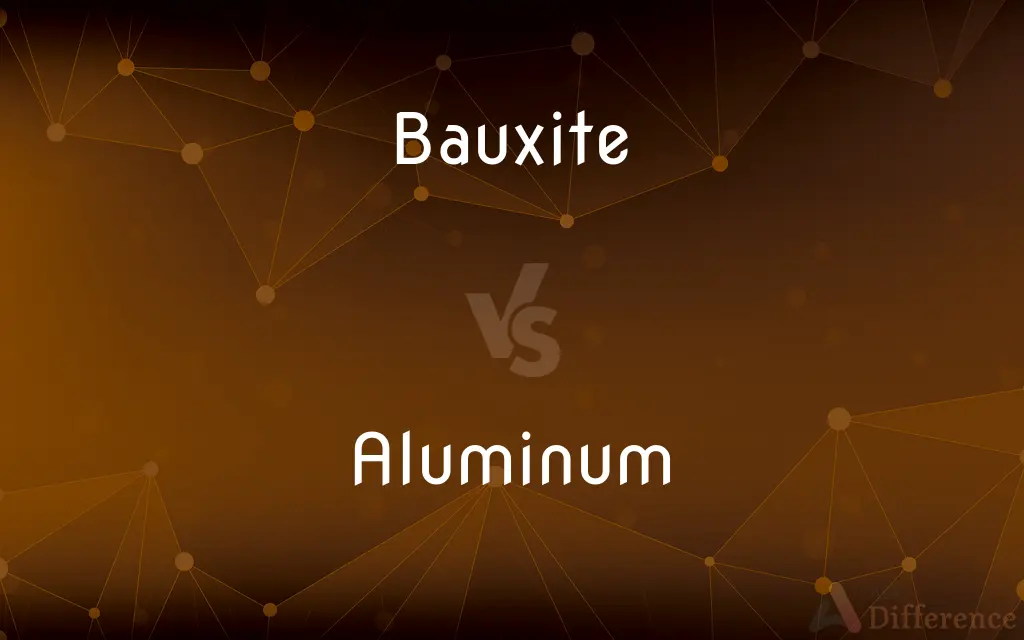Bauxite vs. Aluminum — What's the Difference?

Difference Between Bauxite and Aluminum
ADVERTISEMENT
Compare with Definitions
Bauxite
Bauxite is a sedimentary rock with a relatively high aluminium content. It is the world's main source of aluminium and gallium.
Aluminum
A silvery-white, ductile metallic element, the most abundant in the earth's crust but found only in combination, chiefly in bauxite. Having good conductive and thermal properties, it is used to form many hard, light, corrosion-resistant alloys. Atomic number 13; atomic weight 26.9815; melting point 660.32°C; boiling point 2,519°C; specific gravity 2.70; valence 3. See Periodic Table.
Bauxite
The principal ore of aluminum, composed mainly of hydrous aluminum oxides and aluminum hydroxides.
Aluminum
Standard spelling of aluminium
Bauxite
The principal ore of aluminium; a clay-like mineral, being a mixture of hydrated oxides and hydroxides.
ADVERTISEMENT
Aluminum
The metallic element forming the base of alumina. This metal is white, but with a bluish tinge, and is remarkable for its resistance to oxidation, and for its lightness, having a specific gravity of about 2.6. Atomic weight 27.08. Symbol Al. Also called aluminium.
Bauxite
A ferruginous hydrate of alumina. It is the most commonly used ore for the preparation of aluminum and alumina. It is also used for the lining of furnaces which are exposed to intense heat.
Aluminum
A silvery ductile metallic element found primarily in bauxite
Bauxite
A clay-like mineral; the chief ore of aluminum; composed of aluminum oxides and aluminum hydroxides; used as an abrasive and catalyst
Share Your Discovery

Previous Comparison
Leather vs. Fabric
Next Comparison
Barilla vs. Kelp














































